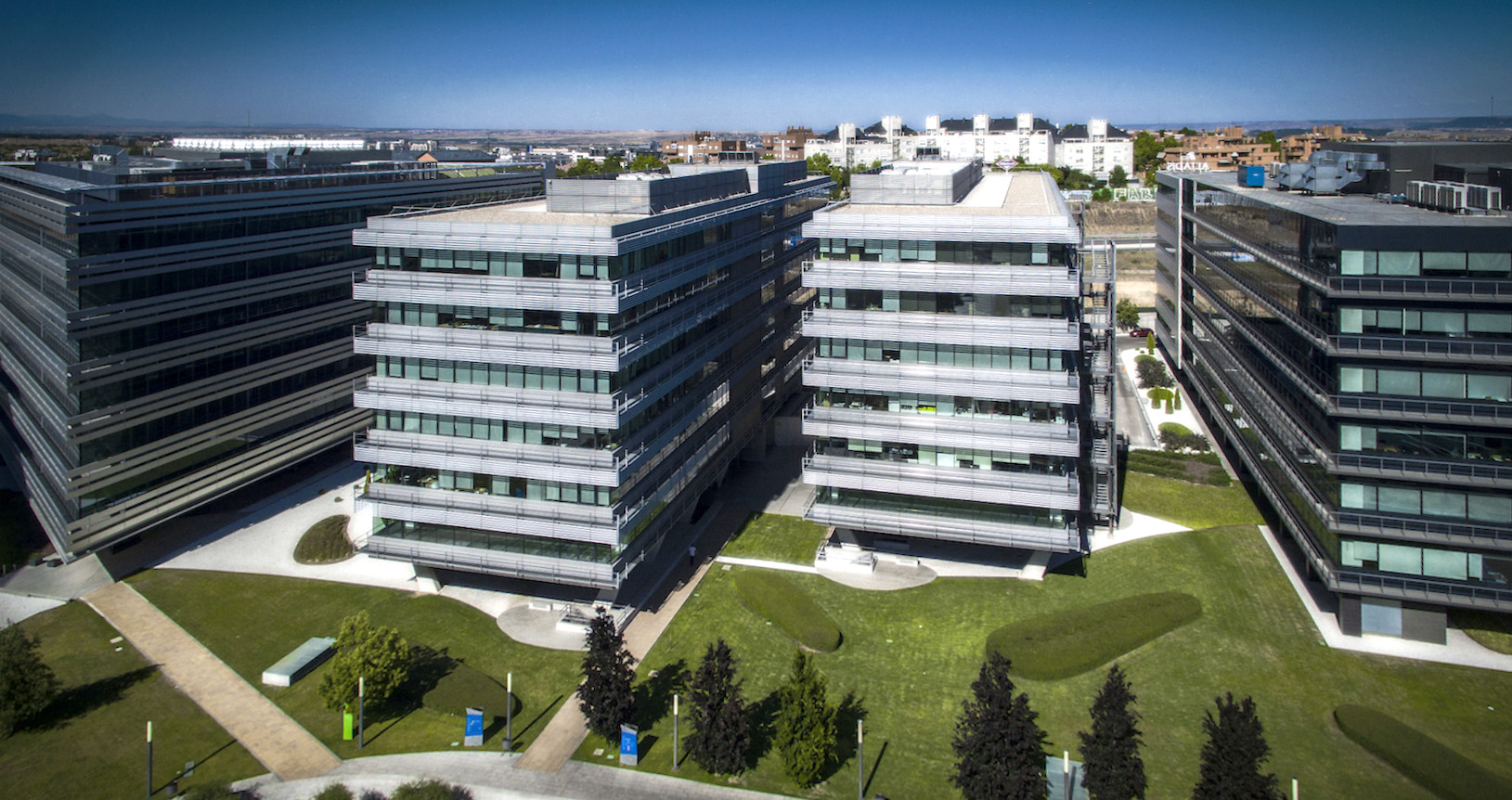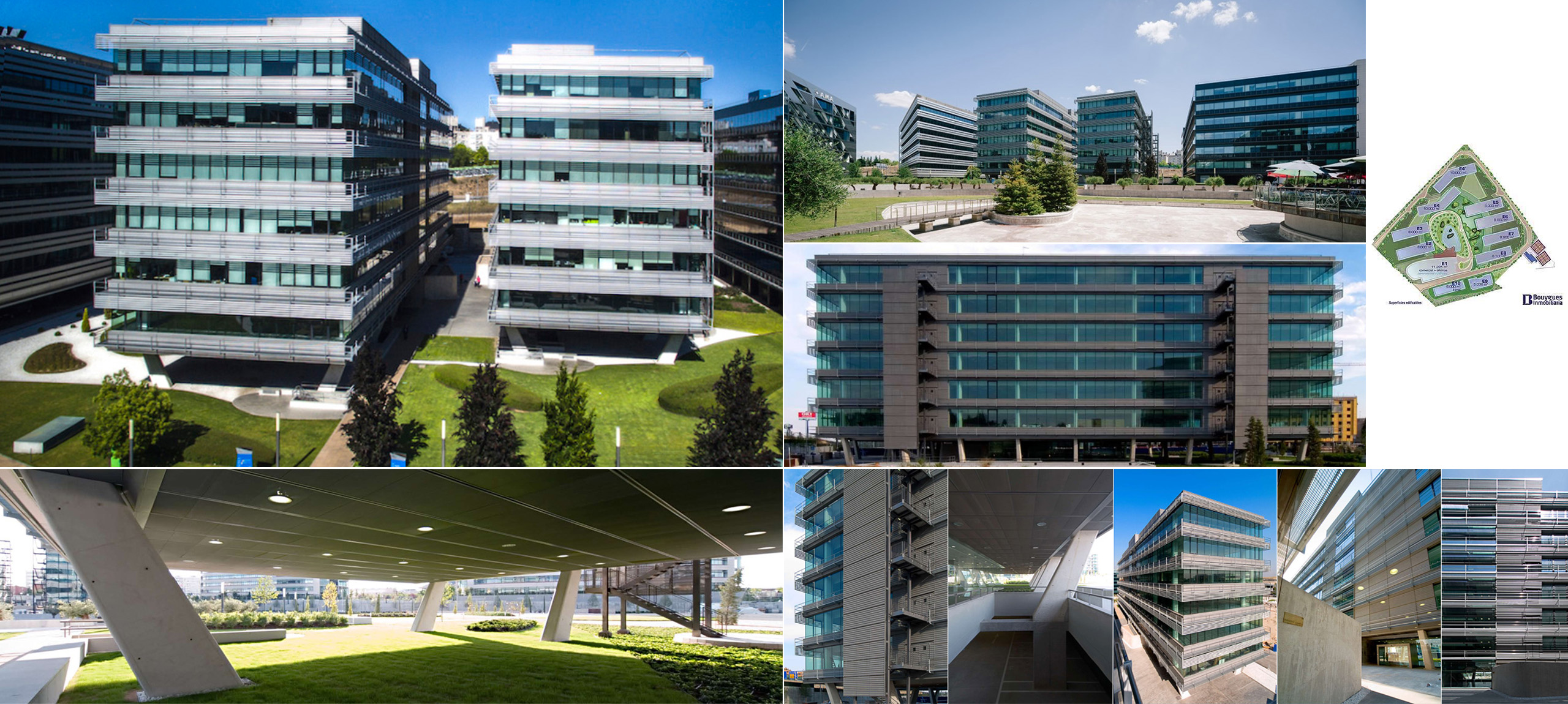
| Cristalia Office Buildings 5 & 6 | |
| Madrid, España | |
| Structural typology | Office Buildings |
| Date | January, 2005 |
| Scope | Detailed design and construction monitoring |
| Architect | Estudio Lamela & Hok |
| Construction | ISO - FCC |
| Owner | Bouygues Inmobiliaria |
These two buildings are composed of 7 rectangular levels above grade of 71.33 m (East-West) x 18.40 m (North-South). There are three common levels for both buildings: ground floor, basement -1 and basement -2. The dimensions of the rectangular levels of the basements are of about 95 x 70m.
The reasons for the choice of these three waffle slab typologies are as follows: in the case of the general floor typology, due to the large 17.10m spans between columns, in the case of the ground floor and basement -1, the difference is the result of the heavy existing loads on the ground floor due to level differences between the upper level of the waffle slab and the level of the finished floor which are solved employing screeds and fills which is also the case in the area destined to fire brigade access.
The access ramps to the basement floors are composed of concrete slabs with a constant, equal 0.30m depth.
The vertical structure has been resolved employing columns and walls situated in the lift shafts, given that the latter are perfectly situated to fulfill this function. The vertical loads are transferred through the columns and the horizontal, via the aforementioned cores or shafts and the walls.
The reasons for the choice of these three waffle slab typologies are as follows: in the case of the general floor typology, due to the large 17.10m spans between columns, in the case of the ground floor and basement -1, the difference is the result of the heavy existing loads on the ground floor due to level differences between the upper level of the waffle slab and the level of the finished floor which are solved employing screeds and fills which is also the case in the area destined to fire brigade access.
The access ramps to the basement floors are composed of concrete slabs with a constant, equal 0.30m depth.
The vertical structure has been resolved employing columns and walls situated in the lift shafts, given that the latter are perfectly situated to fulfill this function. The vertical loads are transferred through the columns and the horizontal, via the aforementioned cores or shafts and the walls.






